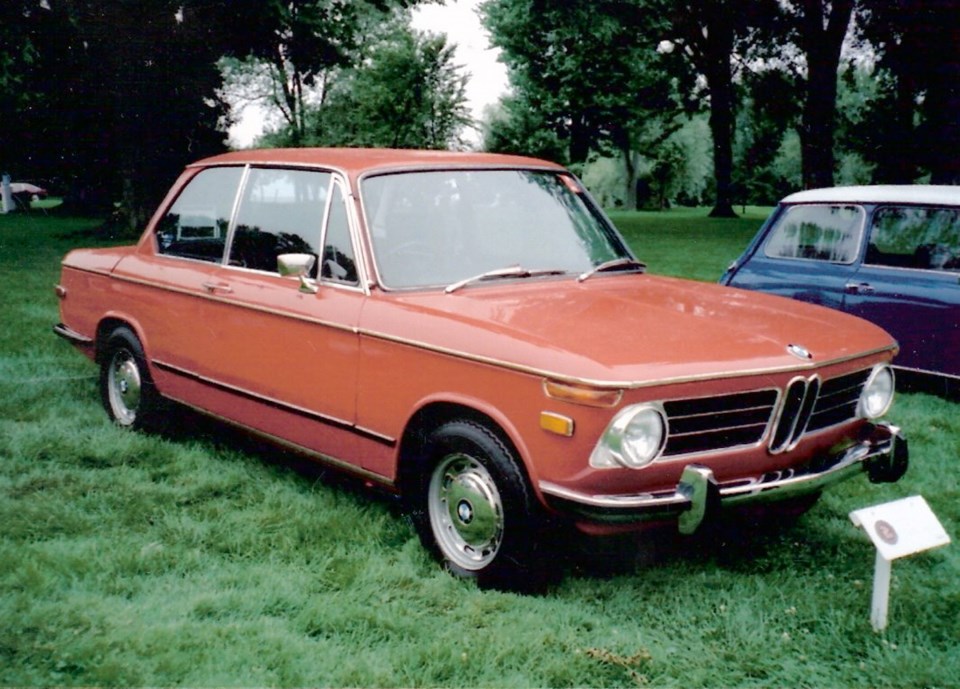Germany’s Bayerische Flugzeur-Werke was founded in 1916 to manufacture aircraft engines, represented in its distinctive blue, white and black badge inspired by a spinning propeller. In 1922 the name was changed to Bayerische Motoren-Werke (BMW) and they began building marine and truck engines as well as motorcycles, the first in 1923.
BMW entered automobile production in 1928 by acquiring the Dixi-Werke plant in Eisenach to produce the BMW Dixi, the British Austin Seven built under licence. Motorcycle building continued in Munich.
In the 1930s, BMW gradually moved into larger cars of their own design, building a solid reputation for sound engineering and sporty, competitive machines, particularly the 327 and 328 models.
Following the Second World War, BMW’s Eisenach factory ended up in U.S.S.R.-controlled East Germany, where it was nationalized. Enough BMW executives escaped to the west to reorganize BMW and resume motorcycle production in American controlled Munich, West Germany, while preparing to build cars.
By 1951, BMW had launched its first postwar Munich-built car based on a prewar design. This began a series of six- and eight-cylinder models that were expensive, unprofitable and slow-selling.
By the mid-1950s, bankruptcy loomed and BMW knew it needed to enter the affordable price range. It acquired rights to the Italian Isetta 300, a two-passenger, rear-engine bubble-car it began building in 1955.
This was followed by the more car-like Isetta-based 1957 600 four-passenger model. Then came the 1960 rear engined 700 model, more conventional in appearance, and so popular it enabled floundering BMW to avoid being swallowed up by Daimler-Benz.
When the 1962 front-engine, rear-drive 1500 compact sedan arrived, it began a postwar journey that would see BMW become one of the world’s great car companies. The 1500 grew into the popular and spirited 1600, and in 1967, BMW introduced a new version of the 1600 in Europe, called the “ti” with an up-rated twin-carburetor engine and stiffer suspension.
The 1600 ti wasn’t compatible with North American exhaust emission standards, so BMW prepared a tamer single-carburetor, 2.0-litre version called the 2002. But even with the larger engine, emission controls kept the 2002 at the 1600’s performance level.
The 2002 had such sound BMW technical features as four-wheel independent suspension with front MacPherson struts, rear semi-trailing arms, disc front brakes and a chain-driven, single overhead cam 1,990-cc, four-cylinder engine.
The 2002 was a two-door sedan of rather conservative style, and while only 1,372 millimetres high, its low beltline and large windows made it appear taller.
Performance was quite respectable. In May 1968, Road & Track reported zero to 100 km/h in 11.3 seconds and a top speed of 173 km/h for the 1,002-kilogram sedan.
The 2002’s most outstanding achievement was combining family accommodation with precise sports car-like handling. Road & Track opined that it was “fully comparable in performance, handling, ride and finish with sports cars costing as much as $2,000 more.”
Car and Driver’s editor David E. Davis, Jr. called the 2002 an “instant winner … one of modern civilization’s all-time best ways to get somewhere sitting down.”
The 2002 built a solid reputation and enthusiastic following. It was the quintessential small sports sedan, ideal for the family man who still wanted taut precise sports-car handling. They were vigorously campaigned in competition.
In 1971, Road & Track chose the 2002 best in class in their roundup of the world’s best cars. It was joined that year by the better-handling (thanks to wider wheels, bigger tires and improved brakes), fuel-injected 2002 tii model (the second i was for fuel injection). Horsepower was up from 113 to 140, which improved performance a little compared with R&T’s previous test. Higher gearing reduced engine revs from 3,320 to 3,020 at 100 km/h for easier highway cruising.
The zero-to-100 time fell 1.5 seconds to 9.8, and top speed was up to 184. The appearance was freshened in 1971 by longer, wraparound bumpers and new body side trim.
In spite of a rapidly escalating price, due in part to a changing German mark/dollar ratio, sales of the 2002 remained brisk as more and more motorists learned of its virtues.
The 2002 continued until 1977, with a total of more than 400,000 built in a variety of body types, although North America got only the two-door sedan. It was replaced by the 3-series BMW, which used many of the 2002’s well-proved components.
The 2002 is fondly remembered by many who consider it, especially the tii version, the best BMW made when factoring in performance, handling, economy, practicality and price. It combined driving verve, reasonable affordability and family accommodation, and consolidated BMW’s “Ultimate Driving Machine” image in the minds of many drivers.



